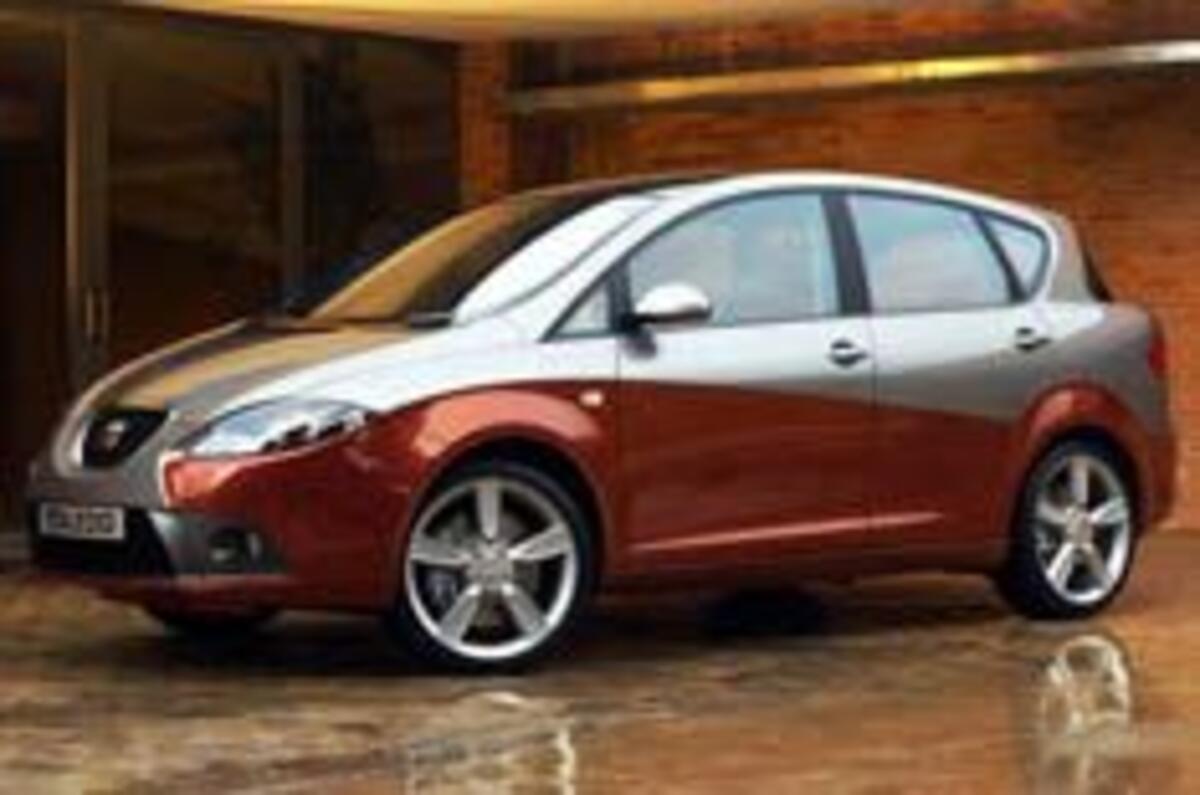Seat shocked Madrid show-goers last week with this Toledo Prototipo concept. The car itself wasn’t a jaw-dropper, but the fact that it will go into production virtually unchanged marks a shift in strategy for the Spanish firm.
‘There will be no more conventional hatches or saloons for Europe,’ said Steve Lewis, Seat’s chief designer. That means the company is looking to follow the move mooted by Nissan bosses, who feel the market for a traditional Almera replacement is shrinking too fast to be economically viable.
‘We are entering into controversial styling, we want to be unconventional,’ said Lewis. ‘The Altea was the first step, this is the second, and there are more to come.’
By that, he means the next-generation Seat Leon, which will evolve into a sporty four-door version of the 2001 Salsa concept and become the third and final Seat car spun off VW’s PQ35 platform, as used by the new Golf. ‘The Leon will still be a shock,’ said Lewis at the launch of the Altea concept last year. ‘It will be a car with the potential to lead its class. From a styling point of view it will be ahead of the competition, in terms of the radical sporty looks that are not expected in that class.’
The Toledo Prototipo follows in the footsteps of the Altea concept that made its debut at the Frankfurt Motor Show last year. The two share the same front end, most of the glass housing and the interior styling, and the Toledo will follow the Altea into production, the latter on sale by July. ‘The car is 90 per cent production,’ said Lewis, referring to the Toledo. ‘There will be a few interior changes and tweaks to the front and rear bumpers.’ That means the next Toledo’s looks will be a stylish advance over the current ‘booted Leon’.
The Renault Vel Satis-esque rear is designed to attract ‘more unconventional customers than the Altea,’ according to Lewis, and boot space rises to 500 litres.
Interior flexibility is as good as the sector demands, with a two-tiered boot complete with moveable shelf, sliding rear seat and an array of hooks, nets and cubbyholes. Seat has modified the chassis with its own suspension ratings and stiffer shock absorbers. Power comes from the 148bhp 2.0-litre FSI petrol unit available in the Altea, and expect the production version to come with petrol and diesel units carried over from within the VW Group. Sales should start in the UK next year.




Add your comment